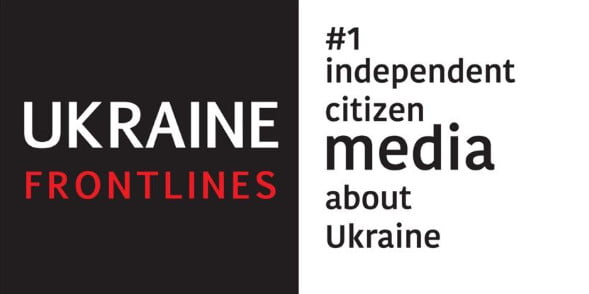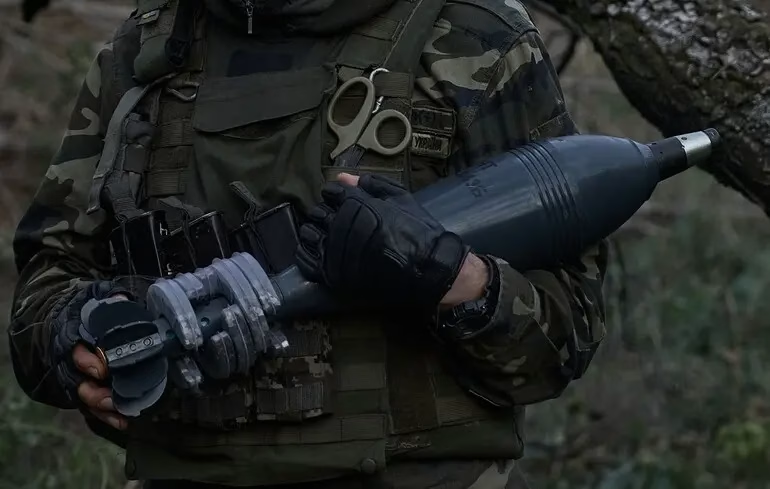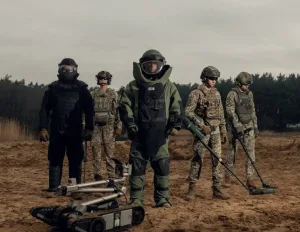Today, a new investigation by Nikolov revealed the withdrawal of 100,000 defective 120mm mines from the frontline.
This is far worse, more appalling, and—most importantly—a hundred times more dangerous than the “17 UAH eggs” scandal. Food can be sourced locally. A hundred thousand mines cannot. Overpriced food, while frustrating, was at least available.
But now, due to managerial incompetence (or corruption), ONE HUNDRED THOUSAND mines are being pulled from the frontline! At least ONE HUNDRED THOUSAND!
Without replacement. At a time when there are around 100 assault operations daily at the front. When our military already struggles to provide sufficient fire support for infantry positions.
To put it in perspective, 100,000 mines would last approximately six months if used sparingly.
A shortage of ammunition is a disaster. An ammunition shortage funded by our own money is sabotage.
The negligence of all those who allowed defective mines to reach the frontline borders on treason.
I can already see attempts to shift the blame onto the military. These attempts are simply vile.
The investigation (with references to regulatory documents!) clearly outlines that the quality control of ammunition is entirely the responsibility of the Minister of Defense.
Everyone must read this investigation. It’s an absolute necessity.
The Ministry of Defense has ordered the withdrawal of all defective domestically produced mortar rounds from the frontlines. These rounds either failed to reach enemy positions or did not detonate at all. According to ZN.UA, at least 100,000 mines are being recalled, a quantity that would have sufficed for six months of careful use.
The most widely used weapon in this war—the 120mm mortar shell—will now be available to the military only after one or two months, and even then, as imported supplies, meaning significant delays. This situation arose because subordinates of Rustem Umerov, responsible for quality control, concealed issues with the mines produced under the oversight of Oleksandr Kamyshyn.
Who knows how long this cover-up might have continued, but videos showing defective mines began appearing on social media, posted by ordinary soldiers. The issue was further highlighted by the prominent journalist Yuriy Butusov. This serves as a textbook example of how corruption and negligence can turn a promising initiative into a betrayal.
A year ago, under the leadership of Oleksandr Kamyshyn, the Ministry of Strategic Industries worked to secure contracts worth tens of billions of hryvnias for Ukroboronprom enterprises led by Herman Smetanin, to produce shells and mines for the Ministry of Defense. The reasoning was clear: Ukraine needed to maximize its own arms production to reduce dependency on allies during the war.
We will not name the specific enterprise whose mines are at the center of this scandal to avoid accusations of disclosing sensitive information. For now, let’s call it “Plant X” (though the enemy is likely aware, as the plant has been targeted multiple times, but the law is the law).
By law and regulations, the process of supplying Ukrainian weapons through Ministry of Defense procurement should follow this structure:
1. The General Staff specifies the type and quantity of weapons needed.
2. The Ministry of Defense communicates these requirements to the Defense Procurement Agency (DPA), indicating what and how much needs to be contracted.
3. The Main Directorate for Technical Assessment and Quality Control of Armaments and Military Equipment at the Ministry of Defense must preliminarily verify whether a given factory is capable of producing the required weapons in the necessary quantities. These are the so-called *military representatives* who are physically stationed at arms manufacturing plants. This responsibility lies entirely within the purview of Rustem Umerov as Minister of Defense, under whom these representatives operate.
4. After approval from the military representative, the DPA signs the contract and provides an advance payment to launch production.
5. The military representative must then continuously monitor the quality of products coming off the assembly line. Again, only after the quality of the manufactured goods is verified by the military representative can the procurement officers sign the invoices and finalize payment.
6. If the military representative allows defective goods to pass, the final official safeguard is complaints from military commanders.
7. If commanders, out of habit, prefer not to “air dirty laundry,” the last unofficial safeguard is videos on social media and complaints from soldiers to journalists.
In the case of the mines, the process reached this final line of defense.
It all began like this. In 2023, V. Zelensky redirected the personal income tax from military salaries (the so-called military PIT) from local budgets to the state budget. Of this, 43 billion UAH was allocated to increase arms production in Ukraine, specifically for Ukroboronprom enterprises. This funding was not intended to increase arms procurement but to expand the production capacity of factories.
This was the right decision. For Ukraine to achieve victory in the war, it must reduce its dependence on weapon supplies from unpredictable allies and focus on supporting domestic manufacturers. On the other hand, dealing with billions in specific hands can sometimes cloud judgment.
Thus, in the winter of 2023–2024, meetings under the auspices of the Ministry of Defense and the Ministry of Strategic Industries were held to implement this commendable idea. For example, during a meeting at the Ministry of Defense on February 6 (the protocol is available to the editorial team), the discussion focused on a contract between the DPA and “Plant X.”
Major General Yevhen Zamotaiev, head of the Central Directorate for Coordination of Foreign Economic Activities of the Ministry of Defense, emphasized the need to fulfill the decisions of the Supreme Commander-in-Chief’s Headquarters and the National Security and Defense Council of Ukraine to urgently sign contracts for ammunition supply, prioritizing domestic manufacturers, as recommended by the DPA.
Yevhen Kurbet, head of the Department of State Quality Assurance at the Ministry of Defense, who was also present, did not oppose increasing contracts with “Plant X.” As a result, the meeting decided to recommend that the DPA process contract drafts with the plant for various types of ammunition, including 120mm mortar rounds in quantities of 300,000 units, with the possibility of increasing the volume to 370,000.
Everything seemed to be going according to plan. However, the responsible parties circumvented their own safeguards against defective goods to ensure the “margin” remained within Kamyshyn’s department.
As early as January this year, the Ministry of Defense’s military representatives inspected the capacity of Ukroboronprom’s “Plant X” to manufacture various mines, aerial bombs, and artillery shells of different calibers.
Initially, the military representative identified the following risks (documents are available to the editorial team):
- Supply issues with critical imported components and raw materials (e.g., powders, explosives).
- The need for training qualified personnel, preparing production facilities, and acquiring additional technological equipment.
- Ensuring uninterrupted work by personnel and stable power supply.
The military representative also emphasized that serial production of the M-12 fuse had not yet been mastered, even though the plant already had technical specifications for it. This is the very component located at the tip of the mine, responsible for triggering the final explosion upon impact.
However, in the end, the military representative issued a positive conclusion: “The enterprise is generally capable of ensuring the production and delivery of products in the following quantities […].” Regarding the 120mm mines, it was stated that Plant X could produce 300,000 units annually, considering its workload.
Before signing the contract, the Defense Procurement Agency (DPA) sought to verify this assessment with the military representatives, especially given that the plant’s facilities had already been targeted by Russian missiles. On February 9, the DPA received an even more favorable conclusion from the military representative, stating that, considering the plant’s workload, it could produce 670,000 mines annually. As a result, on February 14, the DPA signed a major contract with Plant X for the supply of 120mm mortar rounds.
Shortly thereafter, to ensure everything was proceeding as planned, the DPA asked the military representatives to re-evaluate the plant’s capabilities. The response reassured them that since the plant had undergone a comprehensive inspection in 2023, a full re-evaluation was unnecessary. The military representative asserted that the “enterprise is generally capable of fulfilling its declared obligations and will timely offset the provided advance under state contracts for the supply of products for the Armed Forces.”
This time, however, the report omitted risks previously highlighted, such as insufficient production space, lack of qualified personnel, and the absence of serial production for the M-12 fuse.
While the reduction in risks related to space and personnel might be justified—given that the plant had indeed expanded its production capacity—the disappearance of concerns about the fuses was alarming. This omission became one of the critical factors leading to the eventual disaster.
All these reports landed on the desks of Ministry of Defense leadership. Umerov could not have overlooked the unrealistic assessment of the plant’s capabilities by his subordinate but chose to disregard it. Perhaps he avoided reporting to Zelensky about the unfeasibility of such ambitious production goals. Or maybe he was unwilling to abandon the lucrative flow of billions managed alongside Kamyshyn, one of Bankova’s favored and “irreplaceable” managers of the modern era.
The first batches of 120mm mines from Plant X were sent to the front in June. At that time, no significant issues were reported. There was then a production pause for a couple of months, and in September, the plant resumed deliveries. That’s when the problems began to surface.
During firing exercises (from September 18 to November 10), the following issues were recorded:
- Mines deviated from the aiming point by 100–600 meters in range.
- Instances where the mines failed to exit the mortar barrel.
- Mines failed to detonate on target.
- Mines dropped mid-flight, landing 10–150 meters away from the mortar.
- When the aim was adjusted, the mine failed to correctly change its flight range.
- Rare cases where the metal components of the mine remained in the barrel while the propellant continued to burn inside.
However, the military representative did not document any of these problems. It is unclear how many mines or which batches, if any, were thoroughly inspected before being sent to the front lines.
The military authorities did not respond until November 6, when journalist Yuriy Butusov released a video showing a batch of mines where only one out of ten detonated.
On November 18, the Central Directorate for Armament Delivery Logistics (CDADL) of the Ukrainian Armed Forces (UAF) officially reported *“numerous technical malfunctions in the delivered mortar shells”* across various military units.
The issues were consistent: mines failing to exit the barrel, failing to detonate on target, or deviating hundreds of meters from the aiming point. In one unit, out of 17 firings:
- Nine mines fell short by up to 600 meters.
- Seven failed to detonate (three did not leave the barrel at all).
- Only one hit the target.
When the unit switched to a different type of mine from another manufacturer, the results drastically improved: the second shot landed within a 20-meter dispersion ellipse, and the target was destroyed with four shots, including two direct hits.
On November 19, a commander from one unit finally filed an official complaint and summoned a factory representative to document the issues. On November 20, after the complaint reached the Defense Procurement Agency (DPA), the General Staff was informed. That same day, Yuriy Butusov published another video showing a mine that failed to leave the barrel.
Finally, the long-awaited reaction began. Colonel Serhiy Panov, head of the CDADL, instructed other unit commanders to initiate reclamation procedures to replace the defective VOF-843B mortar rounds. To date, approximately 100,000 mines have been recalled, but the full scale of the issue will only be clear after inspections across all units. According to a source from ZN.UA, the UAF currently uses up to 20,000 mines per month in an extremely frugal mode.
On November 21, the Ministry of Defense held a large meeting on the issue, attended by representatives from the President’s Office and chaired by acting Minister Ivan Havryliuk (Umerov was reportedly unavailable that day for undisclosed reasons). The meeting revealed a horrifying picture of systemic inadequacies in the weapon production oversight process.
Head of the Military Representation Directorate, Yevhen Kurbet, provided an explanation about the existing acceptance procedures. He was tasked with increasing the number of mines tested from 100% of batches and expanding the number of shots fired during trials. This indicates that up until now, mines were accepted based on tests involving a small number of shots and not from all batches—essentially just for the sake of ticking boxes.
The representative from the Ministry of Strategic Industries promised to replace the mortar shells from all batches delivered to the Ukrainian Armed Forces (UAF) and emphasized the need for a “quality check of the products being supplied to the UAF.” This suggests that, until now, the quality control from the Ministry of Defense had been at least subpar. However, a representative from the Department of Military-Technical Policy (DVTP) of the Ministry of Defense went even further, stating that there was “no quality control system before delivering products to the UAF.”
The representative from the Ministry of Defense’s Department of Military-Technical Policy openly admitted that there was no quality control system before product delivery to the UAF. This reflects poorly on the management under Rustem Umerov’s leadership.
At the meeting, there were also “technical” claims. The same representative from the DVTP stated that all mines should be supplied with the standard M-12 fuses. It turned out that the mines were equipped with non-standard V-429 fuses, which come as part of a supply from the UAF Logistics Command. These non-standard fuses only activate during the second charge assembly. But where was the factory supposed to get the M-12 fuses if, after the military representative removed the risk of this issue in his last report, the production of M-12 fuses was never launched?
This addresses the issue of the mines failing to detonate upon impact. Now, regarding the failure to reach their target, the cause lies in problems with the powder charge. The powder, packaged in bags or special packaging, is wrapped around the mine’s tail. The explosion of this powder is what propels the mine out of the barrel at a specific speed, which determines its range and accuracy.
Ukraine does not have domestic production of gunpowder, and all of it is imported. It was revealed that no one knows where factory Х sourced the gunpowder from, and most importantly, there is no methodology for testing imported gunpowder in Ukraine. As a result, the Central Research Institute for Armament and Military Technology was tasked with developing a program and testing methodologies for these powder charges, taking into account environmental factors (from -3 to +60°C).
In short: mines are being recalled from the front lines, the Agency for Defense Procurement (АОЗ) is now scrambling to secure imported mines (likely at higher prices since foreign suppliers know Ukraine has no alternatives), and the once-promising idea of developing domestic weapon production has been thoroughly discredited.
Furthermore, neither Minister Umerov nor Mr. Kamyshin could have had more pressing tasks at hand.





















